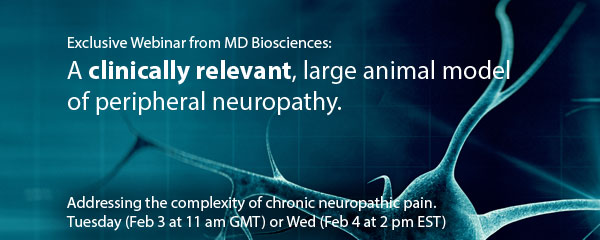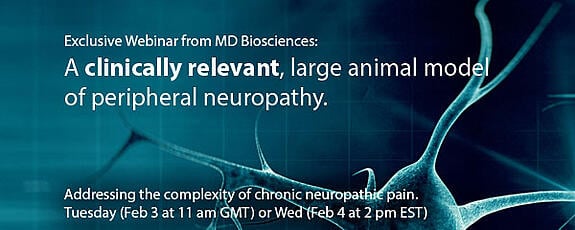2 min read

Related Posts
Pain Response in Pigs Mimics Human Pain Behavior
The pig peripheral neuritis trauma (PNT) model is an important transitional model that bridges the...
By: MD Biosciences on Jan 20, 2015 12:12:09 PM

If you work in drug discovery and development, you are well aware of the failure rate at clinical trials. Industry estimates are that clinical candidates have a 85-90% chance of failure during clinical trials, the most costly stage of evaluation. A report in Nature Biotechnology 32, 40–51 breaks this success/failure rate down between phases as well as the likelihood of approval from the start of clinical trials. For candidates that are suspended during clinical stages, 83% of these reported efficacy or safety as the reason for suspension.
This is costly and time consuming for drug developers. So is there a way to increase the predictability from preclinical phases to clinical phases? We have been evaluating this question for a number of years in our Research Group at MD Biosciences. Animal models used in preclinical development phases are pivotal for understanding mechanisms that contribute to human disease conditions and effective therapies. Rodent models are commonly employed due to their reproducibility and simplicity, however the predictability to the clinic is often times lacking.
In pain research specifically, rodent models of nerve injury have have led to a substantial increase in the knowledge of pain mechanisms and have identified numerous promising preclinical candidates. However, these candidates aren't proving to be efficacious or they show adverse affects in clinical trials. This has led us to develop translational, large animal models that are clinically relevant. Most recently, we have developed a large animal model of trauma-induced peripheral neuropathy that addresses the complexity of chronic neuropathic conditions. This new model will be a valuable tool to further investigate the shift between inflammation-mediated pain (typical clinical presentation of peripheral neuropathy) and chronic pain.

In an upcoming webinar, we will be presenting this newly developed model of peripheral neuropathy. The scientific presentation will characterize three different nerve injuries including the benefits and limitations of each. We will show you data on mechanical and tactile allodynia assessments that are commonly used to calibrate and determine the level of neuropathic pain in humans. Additionally, the pig model includes spontaneous/subjective pain behavior and motor function/dysfunction parameters. Biomarkers reflect inflammation at the site of injury and neural markers at the spinal cord that point to microglia activity. Histological findings are consistent with peripheral neuropathy.
We truly believe this model may help researchers in the development of new therapeutic agents and successful translation to effective clinical therapy. If you would like to participate in the scientific session, please register below.
The pig peripheral neuritis trauma (PNT) model is an important transitional model that bridges the...